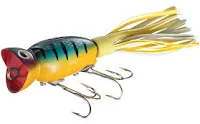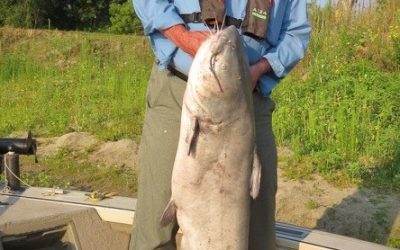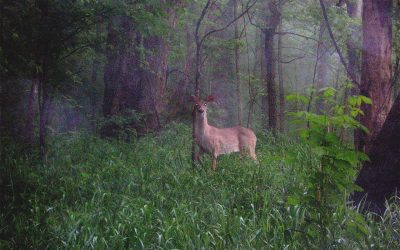As I left the theater after viewing the award-winning movie “The Revenant,” I thought, “Hugh Glass must be spinning in his grave.”
The movie was never meant to be an accurate historical profile of the Hugh Glass story, obviously. And it certainly isn’t. The attack by the Arikara at the beginning of the film, the bear fight and the fact that John Fitzgerald and the young Jim Bridger left him for dead are accepted facts.
The rest of the movie, for the most part, is pure Hollywood imagination.
For a student of the Hugh Glass story, which I have been since reading Frederick Manfred’s novel “Lord Grizzly” back in the 1960s, sitting through a totally historically incorrect movie such as this is taxing. It was also difficult for an outdoorsman to sit through scenes of survival that would not be survivable in real life, even for a man the stature of Hugh Glass.
To begin with, the bear attack took place in the summertime of 1823, not winter. It happened near the forks of the Grand River in north central South Dakota. This is about as far removed from mountains and forests, such as depicted in the film, as you can get. The crawl was to the Cheyenne River about 100 miles south, not to the west to find his deserters. Somehow, he floated down the Cheyenne and into the Missouri River to Fort Kiowa, which was near the current community of Chamberlain, S.D. From the bear attack to Fort Kiowa was a 200-mile journey that took him six weeks to complete.
Director Alejandro González Iñárritu wanted his movie to be authentic. He wanted the guns, knives and other equipment used by the actors in the film to be historically accurate. He even went so far as to hire an Arikara North Dakota native to get the language right. So why didn’t he stick to the historic story line? It needs no exaggeration. Why didn’t he film on the prairie, where it all took place? Remember the scenes from “Dances with Wolves”? Awe-inspiring sunsets, a sense of remoteness that can be experienced only on the grasslands. Instead we have a steady diet of the dreary predictability of forest and rocks.
There are inaccuracies in spite of Iñárritu’s desire for authenticity. For instance, in the opening scenes of the Arikara attack, which took place June 1, 1823, the men are screaming about protecting their packs of furs. They would not have had packs of furs. They were on their way west to trade with the Indians to obtain furs. What they would have been protecting was their supplies, which would enable them to make the long journey and to have something to trade with the Indians for furs.
Hugh’s son was accompanying the expedition. Not so. Hugh never had a son, at least not documented historically. I’m not going to go into more detail because I don’t want to ruin the movie for you if you haven’t seen it.
In the film, he crawls west after the attack, determined to find Fort Henry on the Missouri River at the mouth of the Yellowstone River where the two who abandoned him would be. As I noted earlier, he did not.
And where did Glass get that flint and steel with which to start a fire after that riotous float down the river of no return, the likes of which are not seen in South Dakota. Perhaps I was looking into my bag of popcorn when that was explained.
What about that wild ride down the river in the middle of winter. In 33-degree water you would likely lose consciousness in 15 minutes and be dead in 45. Wearing a bear skin might be good because it would insulate you against the cold, but it might also become waterlogged and drag you down to drown.
Chased by an angry band of Rees, Glass jumps his horse off a cliff to escape them. The horse is killed. As a snowstorm begins to build, Glass removes the horse’s insides and crawls in to stay warm until the storm is over. This, of course, is total fiction. Glass never did that. But, would it work?
Anyone who has ever field dressed a large animal knows that the body cavity is absolutely filled with blood after removing the viscera. That would have to be drained away before you could crawl in with any hope of staying warm. If you are going to be warm, you have to be dry. That is why, perhaps, DiCaprio removed his clothes before climbing into the carcass.
Now, would a freshly killed horse actually keep you warm? Probably. Depending on the outside temperature, keeping warm inside the carcass might work for a few hours. Overnight? Probably not. And depending on the temperature, the carcass may freeze so badly you would not be able to get out until the spring thaw.
All that aside, you may be surprised to know that I recommend the movie.
The bear fight, although computer generated, is amazing. The sound effects are superb, and the acting, not only by DiCaprio but also by Will Poulter, who plays the young Jim Bridger, and Tom Hardy, who plays John Fitzgerald, and the rest of the cast is beyond excellent.
I am not a fan of the filming being done with existing light. The movie is dark and filmed mostly on overcast days.
“The Revenant” has been nominated for 12 Academy Awards and recently took home three Golden Globe awards for Best Motion Picture Drama, Best Director and Best Actor in a Drama Movie for DiCaprio’s role as Hugh Glass as well as outstanding male actor from the Screen Actors Guild.
So it is receiving praises from the theater community.
If you are not familiar with the Hugh Glass story, here it is in a nutshell. None of this is in the movie.
After arriving at Fort Kiowa, Glass spent a few days recovering and then joined a boat full of traders heading for the Mandan villages in today’s North Dakota. Just below the villages at a severe bend in the river, Hugh left the boat deciding to walk across to the village. Shortly after, a large band of Arikaras attacked the boat, killing all aboard. Hugh was discovered by the Arikara but was rescued by a Mandan who galloped his horse down to Glass and plucked him from the Arikara’s grasp.
Glass went overland to find the fort and the young Bridger and Fitzgerald. When he did he discovered Fitzgerald had left and was on his way to Fort Atkinson, which was just above today’s Omaha on the Missouri River. Glass was talked out of killing Bridger because of his youth. Once Glass reached Fort Atkinson, he discovered Fitzgerald had joined the Army. Hugh got his rifle back and the soldiers took up a collection so Hugh could resupply and return to the trapping country.
Over the next 10 years Glass lived the life of a mountain man, surviving many clashes with the Arikara and other tribes. In one of those skirmishes, Glass took an arrow in the back. The metal arrowhead embedded itself into one of the bones of his spine. His companions could not remove it so it stayed in his back for 700 miles to the nearest settlement. Another mountain man cut it out using his razor.
The Arikara finally got him and two other mountain men in early spring of 1833 as they were crossing the ice of the Yellowstone River near the mouth of the Big Horn. They scalped and plundered the bodies. Their bodies were later found on the ice by another trapper and buried in shallow graves. Hugh’s death was avenged about a year later when mountain men recognized his gun in the hands of an Arikara.
For those intrigued with the Hugh Glass story, I’d recommend visiting www.hughglass.org. This website is a product of the Museum of the Mountain Man at Pinedale, Wyoming. I’ve been to this museum a couple of times and recommend it highly. Also, “The Saga of Hugh Glass” by John Myers Myers is well worth reading, as is “Lord Grizzly” by Frederick Manfred. Manfred, a novelist, was writer in residence at the University of South Dakota in the 1970s and 1980s. He used to visit the Journal often. He was the first to coin the word “Siouxland.”
The movie? Well, it should awaken a new interest in this part of our country’s history, much as the movie “A River Runs Through It” promoted a tremendous interest in fly fishing. That is a good thing. The mountain men of the early 1800s were a special breed. There is nothing like them around today. And that, too, is probably a good thing.





0 Comments